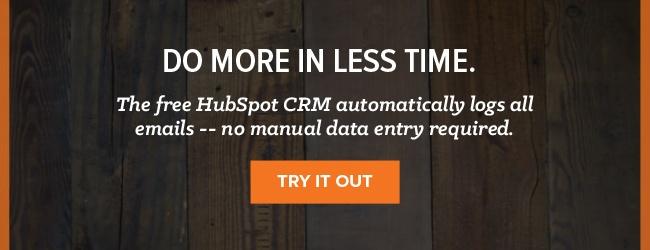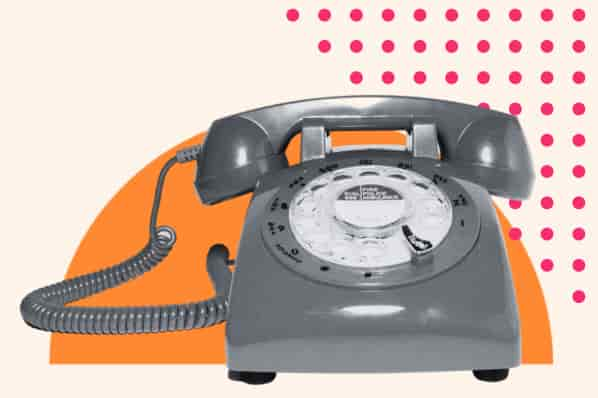

Inbound leads are great for salespeople. Instead of having to hunt down buyers, create interest, and educate them, reps can simply call prospects who have already interacted with their Marketing content and awareness of their brand.
Sounds ideal, right? As more and more marketing teams adopt inbound strategies, more and more sales reps are now able to pare down the time they spend proactively sourcing leads to call and can devote more of their days speaking with buyers who have already expressed interest in speaking with them.
But like all things in life, inbound leads aren’t perfect. No matter how high your lead flow, it’s impossible that every single inbound lead will be a good fit. The higher your lead flow, the more important it becomes to be able to separate out good leads from bad. If you’re handed hundreds of inbound leads a month, you can’t just start dialing from the top of the list -- you’ve got to be strategic about how you tackle the group of buyers in front of you.
If any of the following eight things are true of your inbound lead, rethink calling them right now (or ever) and focus your attention on other better fits.
When You Shouldn't Call Inbound Leads
1) They provided obviously fake information.
This one’s a no-brainer. Has your prospect filled out their phone number as (555) 555-5555 or their name as “Haha, Yeah Right”? Don’t call them.
2) They’re clearly in the educational stage.
Prospects that have just entered your funnel and are still educating themselves aren’t a good group to prioritize. It’s a possibility that they’ll become a good fit in a few weeks or months, but your job isn’t to nurture the lead throughout their entire buying process -- it’s to be there with answers when they’re ready to speak with a rep.
For example, if a lead’s converted on just one landing page and hasn’t been to any other parts of your website or interacted with your company first, let Marketing nurture them before you devote serious time to working with the prospect. If you have the time, interact with the prospect on social media a few times to keep your brand top-of-mind, but don’t devote serious time to prospects who are this early in the buyer’s journey.
Instead, prioritize leads who are converting on middle- or bottom-of-the-funnel content and viewing premium pages (like pricing and product information pages).
3) They’ve been converting on your site for years with no response to other reps' attempts to reach out.
When your company reaches a certain size and generates enough content, you’re bound to get a number of leads who are interested in your content and will read it consistently, but will never buy your product.
Before you call on an inbound lead, check their contact records in your CRM. Have other reps been reaching out to them for long periods of time with no success? Do they subscribe to your blog or interact with your social channels, but never move past reading and sharing content? It sounds like you’ve got an evangelist on your hands -- someone who loves your product and brand, but has no use for it in their day-to-day.
4) They’re still in school.
Depending on your product and industry, it’s very possible that your blog and content are valuable sources of research for students and professors. Unless you sell to educational institutions or departments, employees and students are not a good lead source, as they rarely buy products on behalf of their institutions or have the influence to drive purchasing decision.
Exceptions: Professors and students who are on task forces or special committees may have been tasked with solving a specific problem -- you can usually determine whether this is the case through a quick Google search. Student newspapers and institutional press rooms will often publish articles or press releases if this is the case.
5) They don’t fit your ideal buyer profile.
Businesses use buyer profiles and buyer personas for a reason -- they summarize the companies and people who are the best fits for your product based on historical data. Not every inbound lead you call needs to fit this buyer profile to a tee, but if an inbound lead’s company is significantly smaller or larger than your profile (whether it’s revenue, employee size, customer base, or something else) or a far cry from your best verticals or industries, don’t prioritize them highly.
Keep in mind, though, that a point of contact being too junior (i.e. if they’re an intern, or entry-level) shouldn’t disqualify an entire opportunity. If the company is a good fit but the contact isn’t, reach out to the lead to see who the right people to loop into a conversation are. For more on the distinction between buyer profiles (company fit) and personas (point-of-contact fit), check out this blog post on how to define buyer profiles.
6) They converted once five years ago.
When you’re sifting through your CRM to check if you’ve overlooked any leads, you’ll sometimes find old leads that seem like great fits. But wait -- their last conversion was years ago, and they haven’t been on your website since.
Although it might be tempting to start scraping the bottom of the barrel when things get tough, calling that “inbound” lead might as well be a cold call. Unless they’ve converted from a different email address or other people from the same company have converted recently (and you should absolutely check your CRM to see if that’s the case), the time it’ll take to explain who you are and why you’re calling and where you got their information isn’t worth it. Place them in a Marketing drip campaign and move on.
7) They just signed up with a competitor.
I know, I know -- going with a competitor does not mean a deal is dead. In fact, it means the prospect has recognized a problem that needs solving and has taken action to do so -- a very good sign.
However, the first month after purchasing a new product usually isn’t a good time to start a conversation. Between implementing the new product and getting familiar with it, your ideal points of contact probably don’t have time to speak with you -- and they won’t yet have a sense of whether the product is a success or not. Instead, reach out when they’re a few months deep to see how things are going and whether you can help.
8) They’re a sales rep for the competition.
Believe it or not, some sales reps prospect this way. Whether it’s creating fake LinkedIn profiles to stalk their competitors’ networks or using their prospects’ “Contact Us” form to try and get in touch by pretending to be an inbound lead themselves, be on the lookout for leads that aren’t really leads at all.
What are other signs that you shouldn’t call an inbound lead? Let us know in the comments below.










